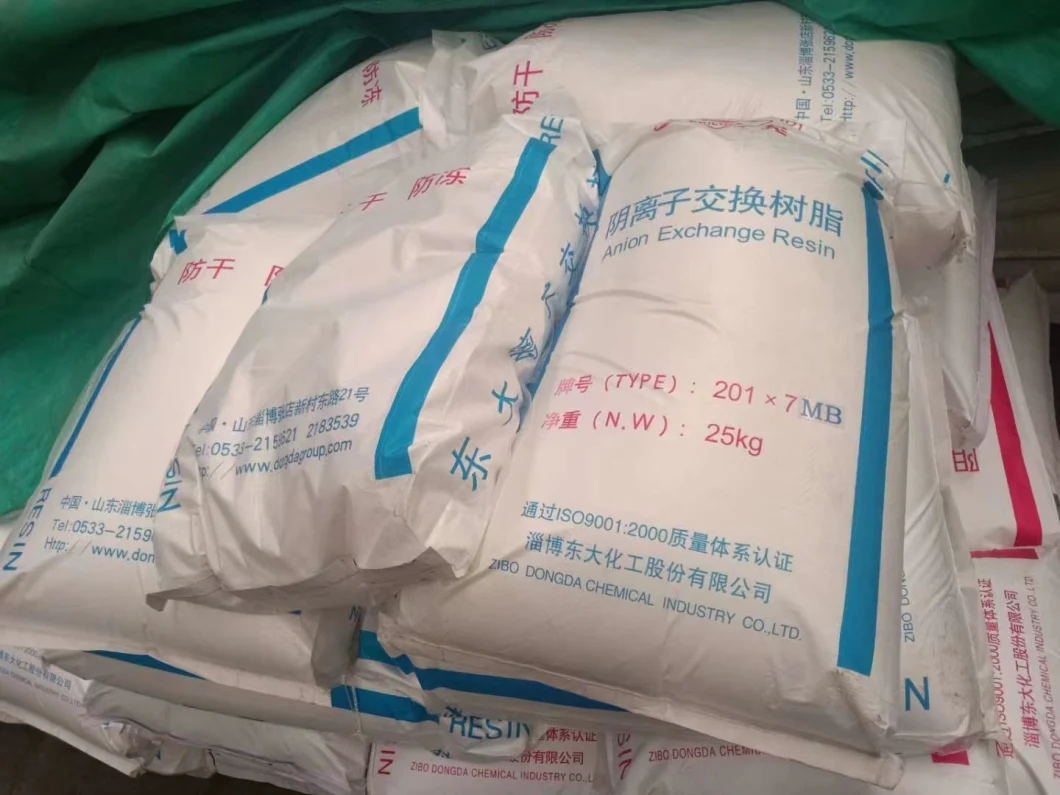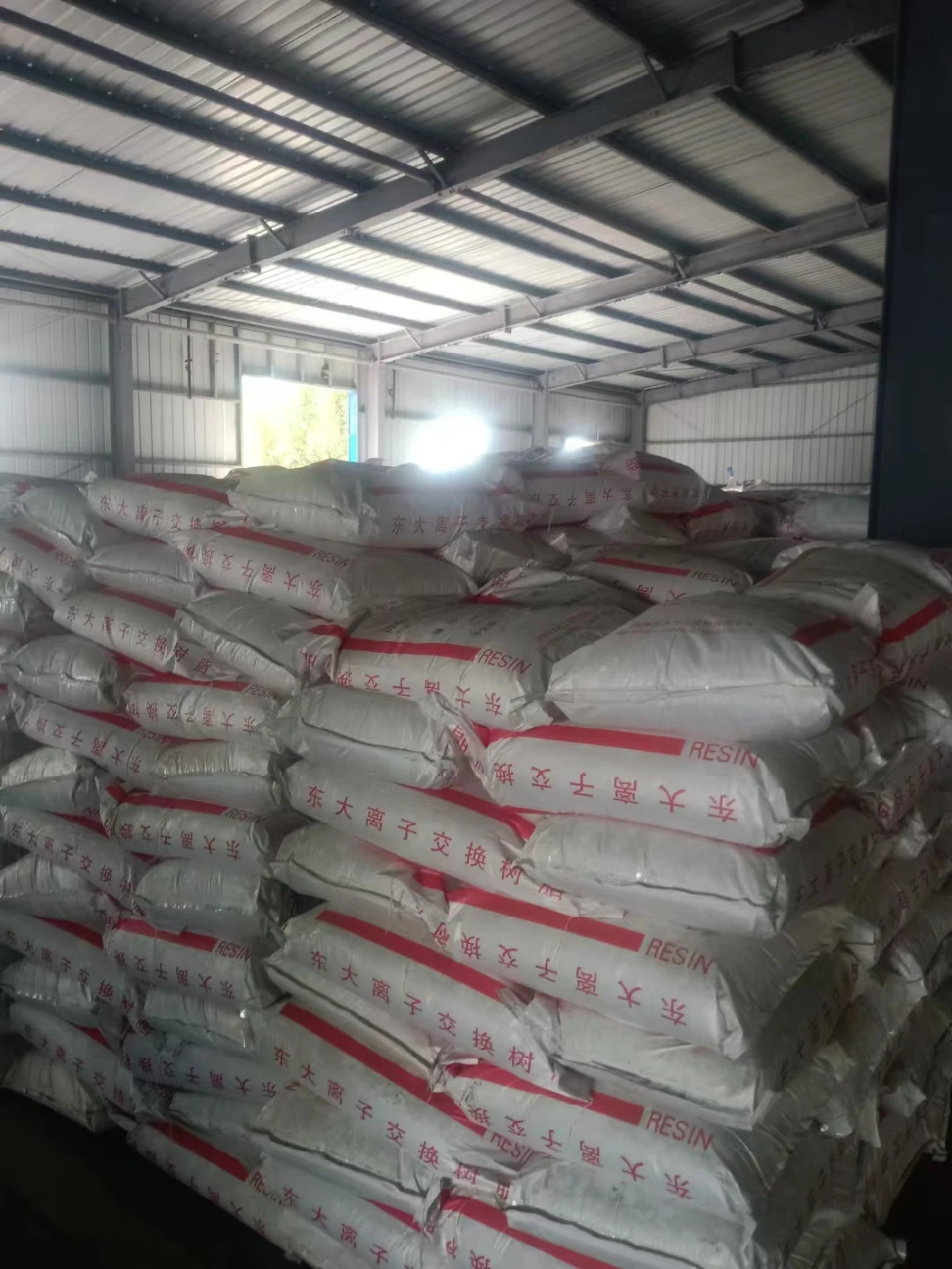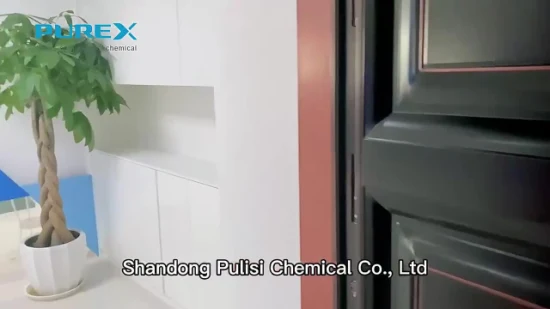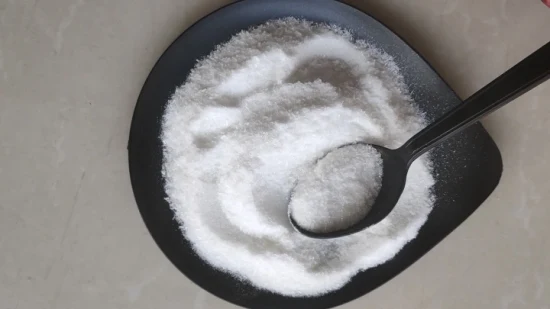
High Quality Drinking Water Grade Food Grade Ion Exchange Resin Water Treatment Agent
Basic Info
| Transport Package | 25kg/Bag |
| Specification | 99 |
| Trademark | henghao |
| Origin | China |
| HS Code | 39140000 |
| Production Capacity | 1000ton/Year |
Product Description

| Model NO. | H103 | Trpe | Water Treatment Chemicals, Synthetic Resin |
| Warranty | 3 Years | Sample | Free |
| Certificate | Wqa, SGS, TUV, ISO | Weight | 25L/25kg |
| The Structure of Resin | Pst | Transport Package | Neutral Packing for Chemicals |
| Specification | H103 | Trademark | Henghao Environmental Protection |
| Origin | Hebei China | Production Capacity | 1000ton/Tons/Month |
The full name of ion exchange resin consists of classification name, skeleton (or gene) name, and basic name. Pore structure is divided into gel type and macroporous type. Any resin with physical pore structure is called macroporous resin, and "macroporous" is added before the full name. If the classification is acidic, "Yang" should be added before the name, and if the classification is alkaline, "Yin" should be added before the name. Such as: macroporous strong acid styrene cation exchange resin.
Ion exchange resins can also be classified into styrene resins and acrylic resins according to the type of their matrix. The type of chemically active groups in the resin determines the main properties and types of the resin. First of all, it is divided into two categories: cation resin and anion resin, which can be ion-exchanged with cation and anion in solution, respectively. Cationic resins are divided into strong acid and weak acid, and anion resins are divided into strong base and weak base (or divided into medium-strong acid and medium-strong base).
Two, the basic type of ion exchange resin
(1) Strong acid cation resin
This type of resin contains a large number of strong acid groups, such as sulfonic acid group -SO3H, which is easy to dissociate H+ in solution, so it is strongly acidic. After the resin dissociates, the negatively charged groups contained in the body, such as SO3-, can adsorb and bind other cations in the solution. These two reactions exchange H+ in the resin with cations in the solution. Strong acid resins have strong dissociation ability, and can dissociate and produce ion exchange in acidic or alkaline solutions.
After the resin is used for a period of time, it needs to be regenerated, that is, the ion exchange reaction is carried out in the opposite direction with chemicals, so that the functional groups of the resin can be restored to the original state for reuse. The above-mentioned cation resin is regenerated with strong acid. At this time, the resin releases the adsorbed cations, and then combines with H+ to restore the original composition.
(2) Weak acid cation resin
These resins contain weak acid groups, such as carboxyl-COOH, which can dissociate H+ in water and become acidic. The remaining negatively charged groups after resin dissociation, such as R-COO- (R is a hydrocarbon group), can be adsorbed and combined with other cations in the solution, resulting in cation exchange. The acidity or dissociation of this resin is weak, and it is difficult to dissociate and perform ion exchange at low pH, and can only work in alkaline, neutral or slightly acidic solutions (such as pH 5-14). These resins are also regenerated with acid (easier to regenerate than strongly acidic resins).
(3) Strong base anion resin
These resins contain strong basic groups, such as quaternary amine group (also known as quaternary amine group)-NR3OH (R is a hydrocarbon group), which can dissociate OH- in water and be strongly basic. The positively charged groups of this resin can adsorb and combine with anions in the solution, resulting in anion exchange.
This resin is very dissociative and works well at different pH. It is regenerated with a strong base such as NaOH.

(5) Transformation of ion resin
The above are the four basic types of resins. In practical use, these resins are often converted into other ionic forms to meet various needs. For example, the strong acid cation resin is often reacted with NaCl to convert it into a sodium-type resin for reuse. When working, the sodium resin releases Na+ and exchanges and adsorbs cations such as Ca2+ and Mg2+ in the solution to remove these ions. No H+ is released during the reaction, which can avoid the pH drop of the solution and the resulting side effects (such as sucrose conversion and equipment corrosion, etc.). This resin can be regenerated with brine (without strong acid) after operating in the sodium form. Another example is that the anion resin can be converted into type and reused. When working, it releases Cl- and adsorbs and exchanges other anions. Its regeneration only needs to use salt solution. resin can also be converted into hydrogen carbonate (HCO3-) operation. Strong acid resins and strong basic resins no longer have strong acid and strong alkali after they are converted into sodium and forms, but they still have other typical properties of these resins, such as strong dissociation and wide working pH range Wait.
8. Application fields of ion exchange resin:
1) Water treatment
In the field of water treatment, the demand for ion exchange resin is very large, accounting for about 90% of the output of ion exchange resin, which is used for the removal of various anions and cations in water. At present, the largest consumption of ion exchange resin is used in pure water treatment in thermal power plants, followed by atomic energy, semiconductor, and electronics industries.
2) Food industry
Ion exchange resins can be used in industrial devices such as sugar production, monosodium glutamate, alcohol refining, and biological products. For example, high fructose syrup is produced by extracting starch from corn, and then undergoing hydrolysis to produce glucose and fructose, and then ion exchange treatment to generate high fructose syrup. The consumption of ion exchange resins in the food industry is second only to water treatment.
3) Pharmaceutical industry
The pharmaceutical industry ion exchange resin plays an important role in the development of a new generation of antibiotics and the quality improvement of the original antibiotics. The successful development of streptomycin is a prominent example. In recent years, there are also researches in the aspect of traditional Chinese medicine.
4) Synthetic chemistry and petrochemical industries
In organic synthesis, acids and bases are commonly used as catalysts for esterification, hydrolysis, transesterification, hydration and other reactions. The above-mentioned reaction can also be carried out by using ion exchange resin instead of inorganic acid and base, and has more advantages. For example, the resin can be used repeatedly, the product can be easily separated, the reactor will not be corroded, the environment will not be polluted, and the reaction can be easily controlled.
The preparation of methyl tertiary butyl ether (MTBE) is to use macroporous ion exchange resin as a catalyst, which is formed by the reaction of and , replacing the original that can cause serious pollution to the environment.
5) Environmental protection
Ion exchange resins have been used in many environmental protection issues of great concern. At present, many aqueous or non-aqueous solutions contain toxic ionic or non-ionic substances, which can be recycled using resins. Such as removal of metal ions in electroplating waste liquid, recovery of useful substances in film production waste liquid, etc.
Ion exchange resin
6) Hydrometallurgy and others
Ion exchange resin can separate, concentrate, purify uranium and extract rare earth elements and precious metals from depleted uranium ore.
Other additions:
Ion exchange technology has a long history, and some natural substances such as zeolite and sulfonated coal obtained by sulfonation of coal can be used as ion exchangers. However, with the rapid development of modern organic synthesis industrial technology, many kinds of ion exchange resins with excellent performance have been researched and made, and a variety of new application methods have been developed. and widely used in scientific research. In recent years, hundreds of resin varieties have been produced at home and abroad, with an annual output of hundreds of thousands of tons.
In industrial applications, the advantages of ion exchange resins are mainly large processing capacity, wide decolorization range, high decolorization capacity, removal of various ions, repeated regeneration, long working life, and low operating costs (although one-time investment costs larger). A variety of new technologies based on ion exchange resins, such as chromatographic separation, ion exclusion, electrodialysis, etc., each have unique functions and can perform various special tasks that are difficult to achieve by other methods. The development and application of ion exchange technology is still developing rapidly.
The application of ion exchange resin is a key research topic in the sugar industry at home and abroad in recent years, and an important symbol of the modernization of the sugar industry. The application of membrane separation technology in the sugar industry has also been widely studied.
Ion exchange resins are all made by organic synthesis methods. The commonly used raw materials are styrene (ester), which is produced by polymerization to generate a skeleton with a three-dimensional spatial network structure, and then introduce different types of chemically active groups (usually acidic or basic groups) into the skeleton. .

In industrial applications, the advantages of ion exchange resins are mainly large processing capacity, wide decolorization range, high decolorization capacity, removal of various ions, repeated regeneration, long working life, and low operating costs (although one-time investment costs larger). A variety of new technologies based on ion exchange resins, such as chromatographic separation, ion exclusion, electrodialysis, etc., each have unique functions and can perform various special tasks that are difficult to achieve by other methods. The development and application of ion exchange technology is still developing rapidly.
Q1. What is the existing capacity to produce?
The annual output of cation and anion exchange resin is more than 20,000 tons,.
Q2. What are our advantages?
A. Our delivery time can be guaranteed. We use environment-friendly machine and built in national level chemical industrial park
B. We have complete production lines. We can custom made the products as customer requirements
C. We are near to Tianjin port and QingDao Port, so we have lower cost on transportation.
Q3. How about our quality of products?
We will test all the raw materials and arrange them into the factory after they are qualified. After the completion of production and testing, only qualified products can be packaged. We strictly follow the production process. Workers with more than 10 years of production experience, timely deal with problems and make registration, and issue 8D report.
Q4. Can I get free sample?
Yes, you can get 200g free sample, you just need to pay for the courier fee.
Q5. What's your delivery time?
15- 30 days after receiving your payment, depends on different products.
Q7. How should I pay?
We accept all kinds of payment ways. such as Alibaba trade Assurance, T/T, L/C,D/A,D/P, O/A,West Union.
Q8. Do you have other Water purification equipment and also can supply complete after-sales service.
We can also provide these products to meet your requirements, we also have a team to do the after- sales service.
Q9. Is it possible to custom the labels with my own design?
Yes, and you just need to send us your bag design, then you can get you want.




